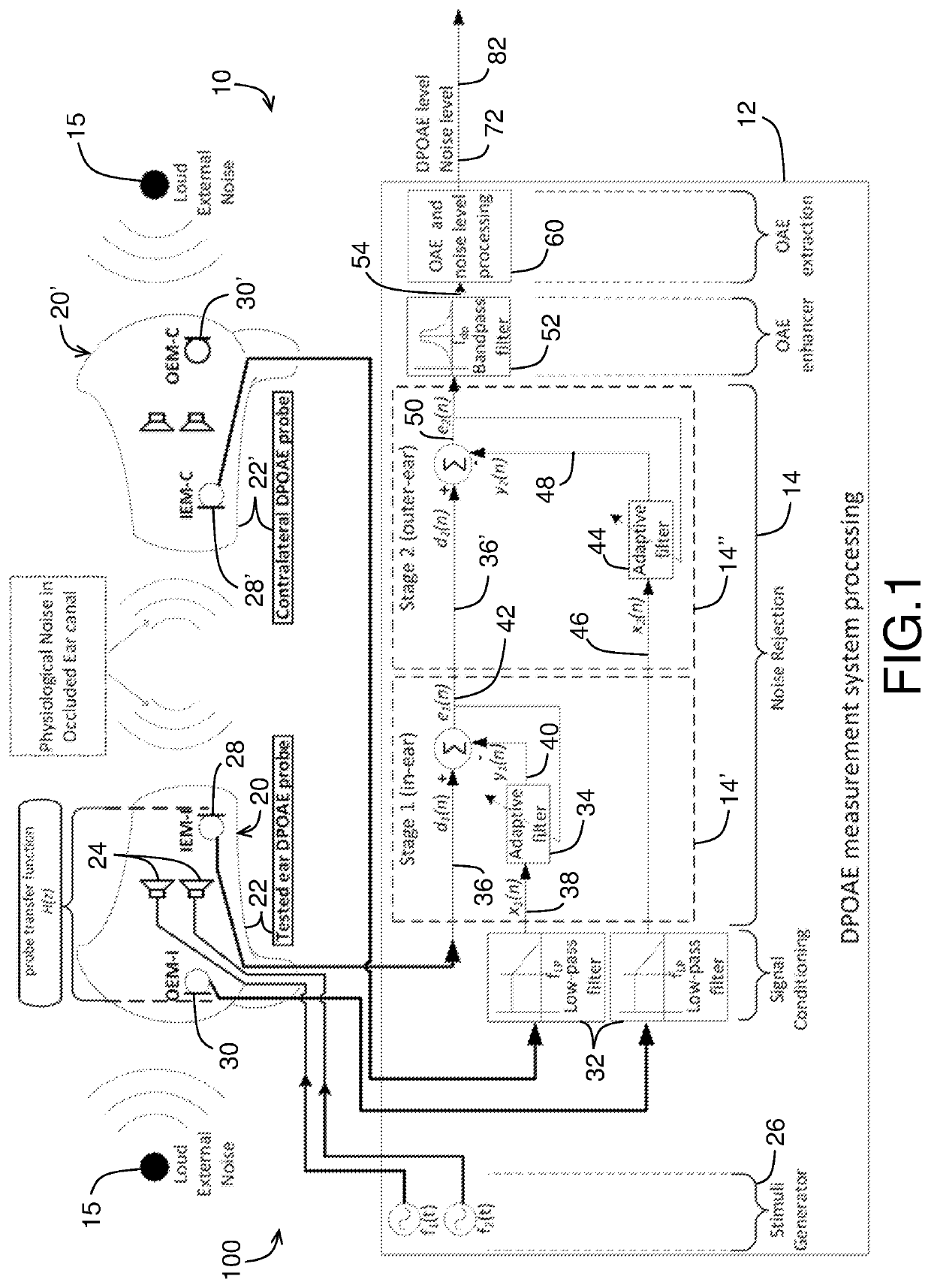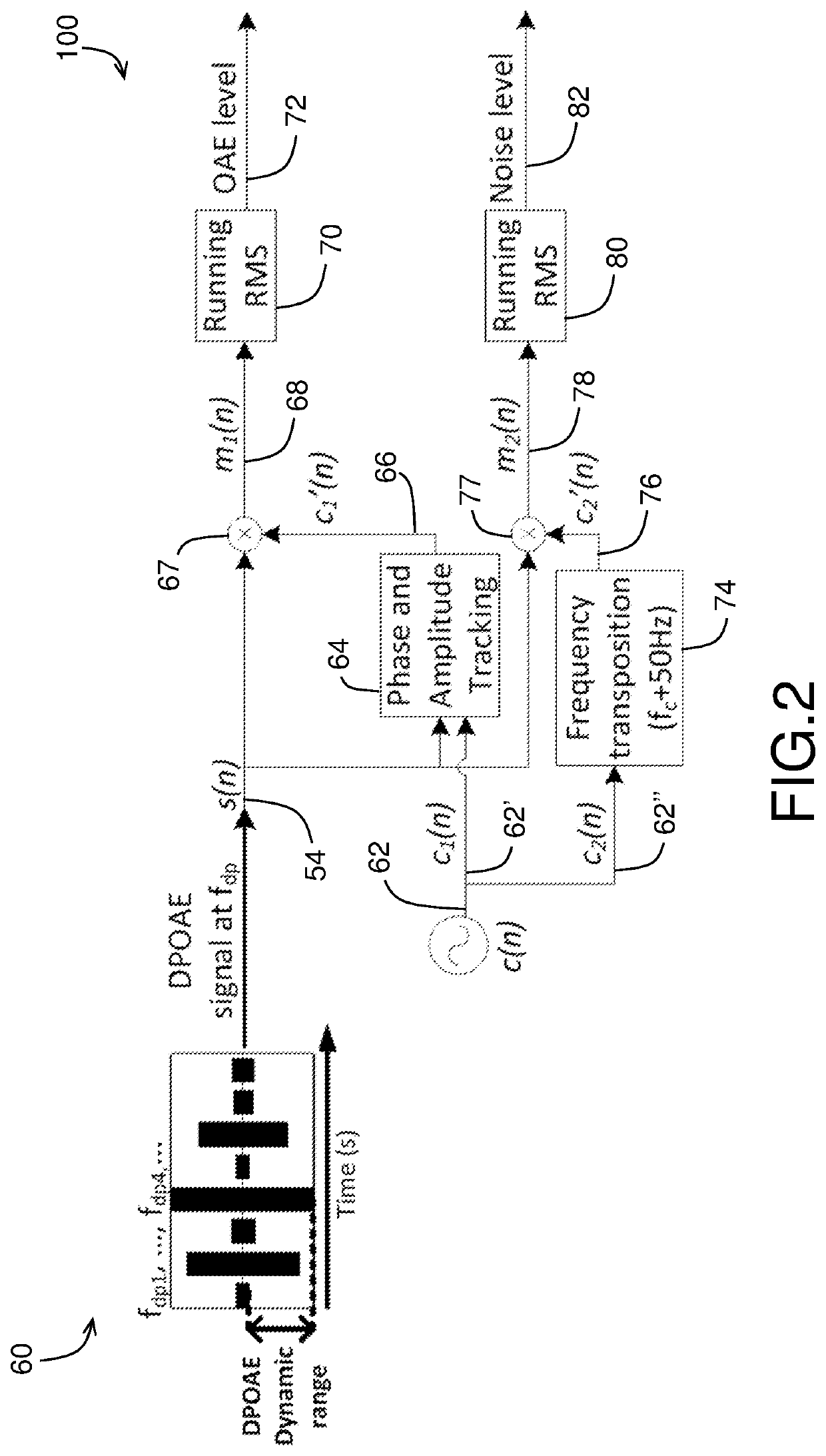Method and device for continuous in-ear hearing health monitoring on a human being
a technology of in-ear hearing health monitoring and human beings, applied in the field of hearing protection, can solve the problems of large differences in the optimal passive noise the actual passive noise reduction of the hearing protector worn during the work shift greatly differs from the optimal passive noise reduction, and the precise residual noise level under the hearing protector remains unknown. , to achieve the effect of improving dpoae detection, enhancing noise rejection performance, and real-time variation assessmen
- Summary
- Abstract
- Description
- Claims
- Application Information
AI Technical Summary
Benefits of technology
Problems solved by technology
Method used
Image
Examples
Embodiment Construction
[0080]With reference to the annexed drawings the preferred embodiment of the present invention will be herein described for indicative purpose and by no means as of limitation.
[0081]With reference to FIG. 1, there is shown a schematic block diagram of a device 10 and method 100 for continuous in-ear hearing health monitoring on a human being 11 (or user) in accordance with an embodiment of the present invention, and having a noise rejection, or adaptive filtering, algorithm 14 in accordance with an embodiment of the present invention and used in the device or method. The device 10 includes an earpiece 20 typically occluding the outer ear canal 13, 13′, such as a custom-fitted earpiece body as an example, with an earpiece-embedded OAE probe 22, 22′. Each earpiece 20, 20′, a pair of which is schematically shown in FIG. 1, includes two preferably high-quality miniature balanced armature receivers 24 (or also often called miniaturized loudspeakers) used to send the two pure-tone stimuli...
PUM
 Login to View More
Login to View More Abstract
Description
Claims
Application Information
 Login to View More
Login to View More - R&D
- Intellectual Property
- Life Sciences
- Materials
- Tech Scout
- Unparalleled Data Quality
- Higher Quality Content
- 60% Fewer Hallucinations
Browse by: Latest US Patents, China's latest patents, Technical Efficacy Thesaurus, Application Domain, Technology Topic, Popular Technical Reports.
© 2025 PatSnap. All rights reserved.Legal|Privacy policy|Modern Slavery Act Transparency Statement|Sitemap|About US| Contact US: help@patsnap.com



